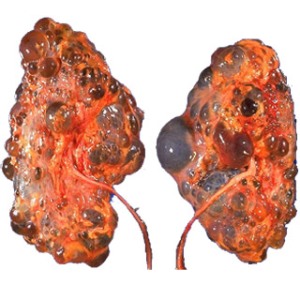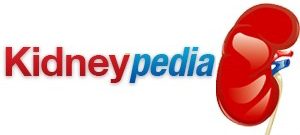
Renal disease, also known as kidney disease, is a term for any of several different illnesses that result in damage to the kidneys and loss of kidney function. There are two broad classifications of renal disease, acute kidney failure and chronic renal disease.
Acute Kidney Failure
Acute kidney failure or acute renal disease can result from trauma or damage to the kidney itself, from acute loss of blood, from bacterial or viral infections, or from anything that either causes direct damage to the kidneys or obstructs the flow of blood. Acute kidney disease requires treatment to sustain life and prevent further damage, and often requires hospitalization. In most cases, the kidney damage is reversible.
Chronic Kidney Disease
Chronic kidney disease or chronic renal disease is a progressive condition in which damage to the kidney accumulates over time along with
increasing loss of kidney function. Eventually, the slow progression of chronic renal disease reaches a point where so much kidney function is lost that renal replacement therapy (dialysis or a kidney transplant) is necessary to sustain life and health. Although the progress of chronic kidney disease can often be arrested, the damage from it is irreversible.
Risk Factors
The largest single risk factor for chronic kidney disease is high blood pressure. High blood pressure is associated with a number of health risks as well as kidney disease, including increased risk of stroke and heart attack. It can also damage the small blood vessels inside the kidney, resulting in damage to the organ and loss of function. Other risk factors include diabetes, obesity, and anything contributing to any of those.
Symptoms
In early stages, renal disease is usually asymptomatic, hence the need for diagnostic procedures such as blood or urine tests to detect the disease. In later stages, symptoms may occur as a result of the buildup of waste materials in the body that healthy kidneys remove from the bloodstream and eject with urine. When this happens, symptoms may include weakness, lethargy, shortness of breath, and confusion. All of this results from accumulation of toxins in the bloodstream. Other systems may also be affected by kidney failure, including the cardiovascular system. Renal disease carries with it an increased risk of cardiovascular disease, and the single most common cause of death related to kidney failure is a heart attack.
Diagnosis
The diagnosis of renal disease typically doesn’t start with renal disease. It begins with one of the underlying risk factors. For example, if a routine exam reveals high blood pressure, a doctor will usually prescribe a blood test for kidney function or a urine test for presence of albumin (blood protein) in the urine, or both. If the tests indicate a loss of kidney function or damage to the kidney, follow-
The follow up diagnosis to determine the degree of damage to the kidney (or the stage of chronic renal disease), along with an understanding of the cause of the condition, also determines what treatment should be undertaken.
Treatment
Treatment for renal disease in the early stages consists of treating the underlying condition that is causing the renal failure. This may include diet, exercise, and medication to control high blood pressure, standard treatments for diabetes, treatment of infections with antibiotics or antiviral drugs, or whatever is required to control the problem. Although chronic renal disease causes kidney damage that is irreversible, if the progress of the illness is arrested at an early stage there will be no serious health consequences. There is a lot of redundancy built into the kidneys as with many vital bodily systems.
As the disease progresses to the point of complete or near-
A kidney transplant can restore natural kidney function and eliminate the need for dialysis. This requires a suitable kidney donor and carries risks of its own, but in the case of advanced kidney disease it may be the only long-
